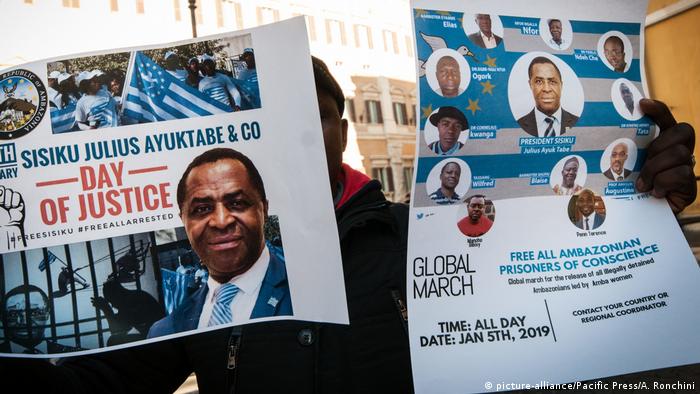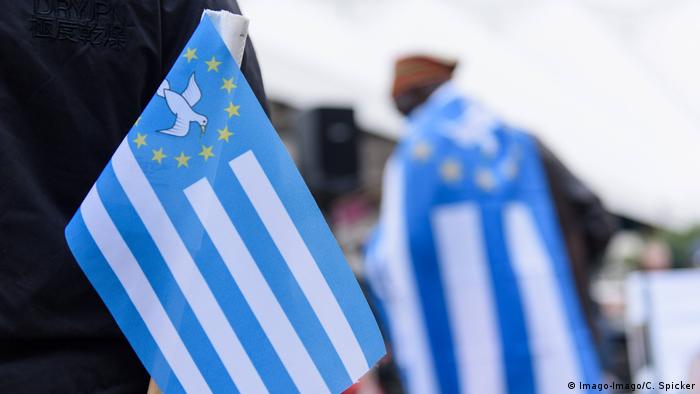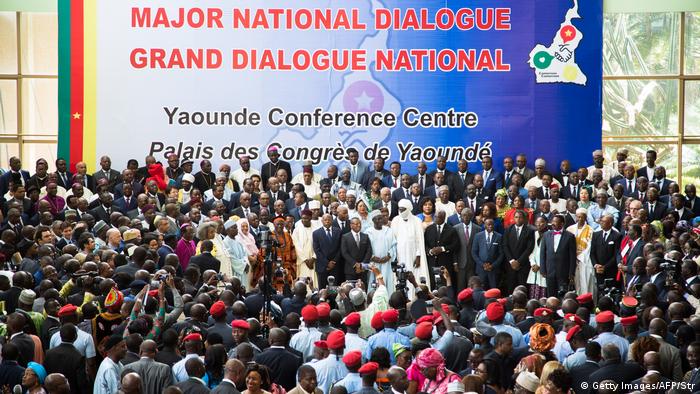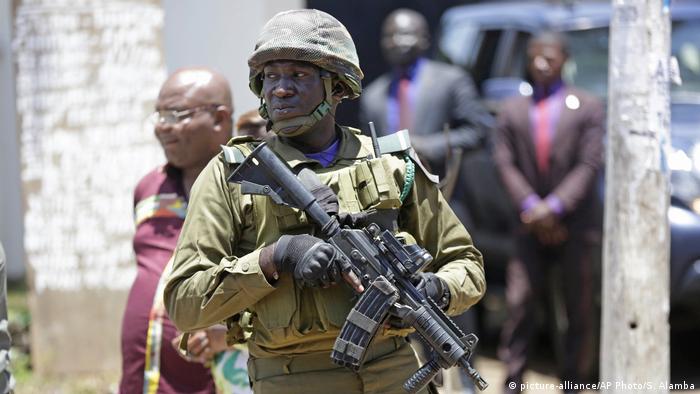1, April 2020
Where is President Paul Biya? Cameroon Concord News to put up an obituary announcement on him 0
Cameroon’s coronavirus problem is much greater than the Biya regime is acknowledging. The true number of cases is far greater than the tally from the Minister of Public Health. Senior CPDM officials are sick not only with the coronavirus but are HIV positive. More signs of uncontrolled infection in the cities of Douala, Yaoundé and Bafoussam have emerged and there are fears things are getting out of control.
Medics in the rural areas particularly in war ravaged Southern Cameroons have been incessantly flashing out signals to the World Health Organization that Southern Cameroons may run out of cemetery space if something is not done and done in a hurry. Last week, the Ministry of Public Health announced that some of the COVID-19 patients were recovering but Cameroon Intelligence Report sources in Douala and Yaoundé have all hinted that the deaths have started coming so fast.
A senior opposition figure in Yaoundé who hails from the Far North Region contacted by this reporter recently asks, reluctantly, whether both French and British Southern Cameroonians should in fact be relieved, because apparently even when a nation faces unrelenting misery—accelerated by the politics and policies of its government—it doesn’t necessarily break down as fast as Paul Biya’s Cameroon.
Biya and his ruling CPDM crime syndicate have turned Cameroon into a criminal wasteland, with French Cameroun political gangs in tricked-out. A nurse at the Yaoundé General hospital who spoke to our undercover reporter revealed that some senior army officials have secretly collected ventilators from the hospital citing orders from the presidency of the republic. And like the policy against the Nigerian Islamic sect, Boko Haram and Ambazonia Restoration Forces, the Biya Francophone regime is erecting roadblocks to prevent people fleeing the rural areas from bringing the coronavirus with them to Yaoundé. These efforts at containment will of course fail and coronavirus will definitely find its way to Mvomeka’a where the 87 year old President Biya is self-isolating!
Apart from Biya’s failed leadership, the CPDM government is another palaver. Many Cameroonians would celebrate its passing, and even its die-hard supporters are now seeing signs that the coronavirus is catalysing changes that Biya and his Francophone Beti-Ewondo acolytes resisted long ago.
Given how many people are dying now in Yaoundé and Douala and with Biya helpless and quarantined at his Mvomeka’a palace, it would be grotesque to think of coronavirus as a lucky break for Cameroonians in support of regime change. With COVID-19, the deep bench of the so-called CPDM Political Bureau and the House of Senate will be depleted.
National Assembly Speaker, Cavaye Djibril has blatantly refused to announce that he had contracted the coronavirus. He is 80 years old and a chief Biya acolyte to whom he speaks regularly and in person.
However, the center of all speculation is President Paul Biya himself. The dictator doesn’t appear in public often, even in the best of times, and you’d have to be fairly lucky to spot him in Yaoundé—except on a few occasions where his appearance is so customary that an absence would make Cameroonian allies and enemies, wonder if an illness must have felled him.
The world is already in the middle of the coronavirus season and Biya is yet to make a televise statement to the Cameroonian people. State radio and television recently reported that the Head of State has created a special fund to combat the virus. But rumours about Biya do not die so easily in Cameroon. Why can’t President Biya just give his speech from his sitting room at the Mvomeka’a palace? Is this not the ideal opportunity to discuss how the funds provided will be disbursed to fight the spread of COVID-19? Is this not also a good opportunity for Mr. Biya to speak of the process of renewal that Cameroon will have to undertake to Emergence 2035?
After his last meeting with the US ambassador to Cameroon, speculation has been rampant. Surely, say the rumours, Biya is dead—or he is self-isolating! These rumours aside, the perception of distance has made Mr. Biya, already a distant figure without charisma or warmth, seem superannuated and out of touch. We understand Biya is in a febrile delirium in Mvomeka’a but if he does not show up seven days after this editorial, Cameroon Concord News Group shall put up an obituary announcement on him.
What is keeping the ruling CPDM gang in power now is the simple fact that the whole Cameroonian nation French and British Southern Cameroons are suffering together and it is evidently clear that Biya deliberately weakened all state institutions and tribal zed the army making them unhealthy enough to rival his leadership, even in this diminished state. Today, police commissioners, army captains are dying of COVID-19, just as poor civilians too!
Coronavirus has exposed and confirmed the incompetence and malignance of the Biya regime, at the same time it has crippled the forces for change headed by Prof. Maurice Kamto. Popular protests in the streets of Douala and Yaounde simply cannot happen as long as the manpower for those protests remains sequestered at home, and as long as morale is utterly depleted by the task of burying one’s loved ones. Regime change in Yaoundé might have to wait. At least the coronavirus pandemic will eventually end, and with its end, change is one more thing to look forward to.
By Soter Tarh Agbaw-Ebai


































2, April 2020
Coronavirus, African Imams and Men of God: The New Trinity 0
The coronavirus remains on course to inflict uncountable health and economic damage the world over. It’s a resistible force of nature that is keeping most of the world up at night. Numerous elements have come together to help the virus spread unchallenged and it has claimed over 47,521 lives around the globe.
Immediately science and technology accumulated enough data about the virus, broad recommendations were set out to slow its spread while research laboratories went to work for a cure or vaccine. The determination of COVID-19 is being matched by that of world leaders and scientists.
Social distancing is the foremost measure imposed and encouraged by political leaders and experts all over the planet. So far, statistics suggest that the curve is flattening in many parts of the world. To curb the spread of the pandemic, the population has a role to play which is simply following government and medical directives. It is here that the current absurdity of religious fanaticism in Africa comes into play.
Cameroon Concord News Group believes that many pastors and religious clergies in Africa are putting the lives of their followers at risk in seeking to start the age-old God versus science squabble game in the middle of a global crisis. Insisting on holding church services at this time in defiance of scientific and government guidance is reckless and very dangerous.
Science and religion are two sides of the same deep human impulse to comprehend our universe. Embracing both helps mankind in understanding our place in it and to marvel at the wonder of life and the infinite universe we are surrounded by. Let’s keep them that way, and not let one usurp the role of the other.
The actions of some of our religious leaders during this coronavirus pandemic in leading vulnerable and gullible people into early graves are completely unacceptable. The denial of science amongst Christian and Muslims fundamentalists now haunts countries in the Sub-Saharan region.
In professing to be wise, by their actions and denials of the ferociousness of the coronavirus, our Imams and men of God, are becoming fools because this global killer knows no race, age, social status, religious beliefs nor borders. The number of avoidable fatalities in Africa is rising at catastrophic rapidity as people continue to ignore social distancing guidance and mindful of Africa’s poor record keeping history, the full extent of the damage will never be known.
Today, it is difficult in Cameroon, Gabon, Congo-Brazzaville, Chad and Equatorial Guinea to differentiate people with COVID-19 and a common flu as many have mild symptoms like tiredness, fever and dry cough. Consequently, a person may be carrying and transmitting the virus without any knowledge. The virus is particularly aggressive among the elderly and those with pre-existing health conditions resulting in a higher death rate amongst this group. Armed with these facts, Cameroon Concord News Group believes that any responsible religious leader would instruct his followers to adhere to social distancing for their own good.
Churches and Mosques in nations that started Islam and Christianity have all shut down in line with government policy. But those in Sub-Saharan Africa are still operating claiming that their leaders have the backing of the Holy Spirit and Prophet Mohammed. This is going on in areas with little or no healthcare system and ventilators.
The evidence is prodigious that Christians and Muslims fundamentalist leaders in Sub-Saharan Africa have considerable power in society with millions of followers that can never be challenged especially during a pandemic.
Cameroon Concord News Group including thousands of our readers is caught in a state of disbelief! What kind of religious beliefs could propel church leaders in the 21st century to challenge scientific evidence when thousands are dying?
This hostility to science will deplete thousands in Africa over the next few weeks. Correspondingly, we of this publication salute the Ugandan government decision to arrest three Roman Catholic priests last Sunday for celebrating Mass publicly, in alleged defiance of government orders banning religious gatherings during the pandemic.
Isong Asu
London Bureau Chief